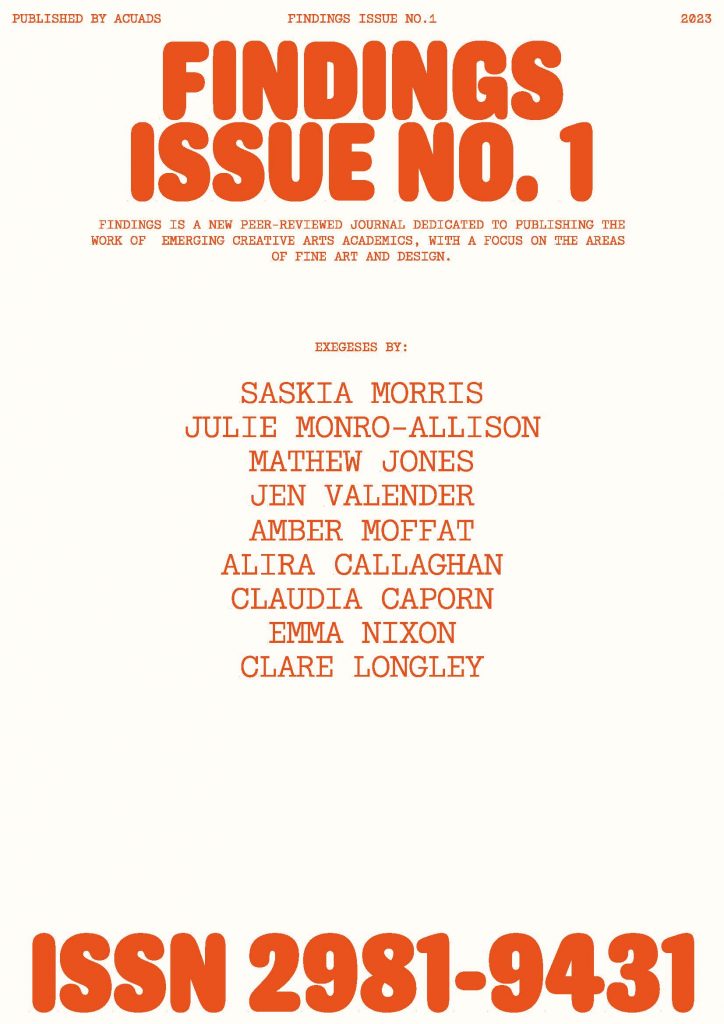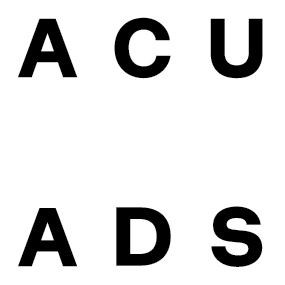
Findings Issue #1 Cover Designed by Nina Gibbes.
Aims and Scope
Findings collects emerging voices in creative arts writing in Australia. As an annual
anthology, Findings accepts submissions from honours, masters, and PhD
students in the year of, or the year after, their date of completion.
Every year, creative arts graduates produce thought-provoking writing on the
aesthetic, social, and political implications of creative practice. Despite the high
quality of such writing, it has rarely been showcased. Findings seeks to showcase
the strength and diversity of Australia’s creative arts writing, by assisting graduates
to rework components of their exegetical or dissertation writing into standalone
texts.
Graduates writing on any of the disciplines within the creative arts will be
considered. However, and despite this pluralistic scope, Findings prioritizes the
publication of original writing on visual art and design.
Findings is produced in collaboration with Curtin University, RMIT, the University
of New South Wales, Queensland University of Technology, the University of
Sydney, Monash University, the University of South Australia, ANU, and Edith
Cowan University.
Findings is published by the Australian Council for Art and Design Schools in PDF
and EPUB formats.
Advisory Board
- Associate Professor Lyndall Adams (ECU)
- Dr Bruce Slatter (Curtin University)
- Dr Charles Robb (QUT)
- Professor Simon Biggs (UniSA)
- Dr Francis Russell (Curtin University)
Editorial Board
- Associate Professor Tara McDowell (Monash)
- Dr Helen Hughes (Monash)
- Dr Astrid Lorange (UNSW)
- Dr Tim Gregory (UNSW)
- Wes Hill (SCU)
- Kathleen Horton (QUT)
Submission Process
- Findings invites creative arts graduates to submit a chapter from their dissertation or exegesis to our editorial board for consideration as part of an expression of interest (EOI).
- Chapters do not need to be reworked for the EOI stage. However, the EOI must include a brief description of how the chapter could be reworked to function as a standalone text (see submission guidelines for more information).
- The editorial board will consider all submissions on receipt, and will either reject the submission or approve it for peer review.
- The double-blind peer-review process will allow for feedback on both the form and content to be provided. Consulting the recommendations that emerge from the peer-review process, the editors will work with each writer to develop their chapter into a standalone piece.
Submission Guidelines
- All submissions must be accompanied by a letter of support from a supervisor or relevant school or discipline area director of graduate studies (or equivalent).
- Submissions must be between 3000 and 5000 words.
- Submissions may include images.
- Submissions must be accompanied by a cover letter that explains the broader scope of the original project.
- All submissions must be formatted as follows: Times New Roman typeface; 12pt; 1.5 line spacing.
- Please use Australian spellings.
- Use Chicago author-date style, 17th edition.
- Send submissions to: francis.russell@curtin.edu.au
